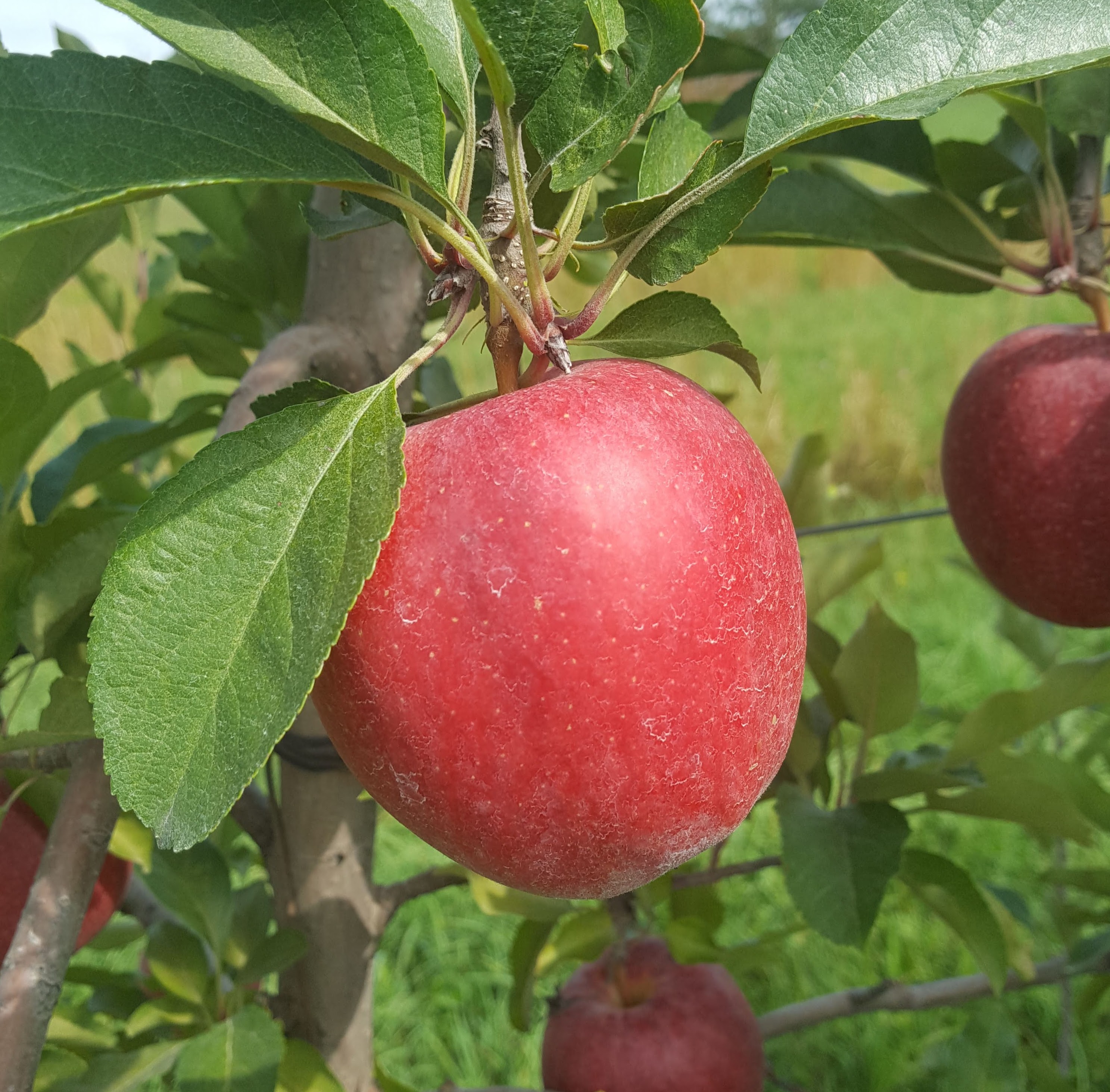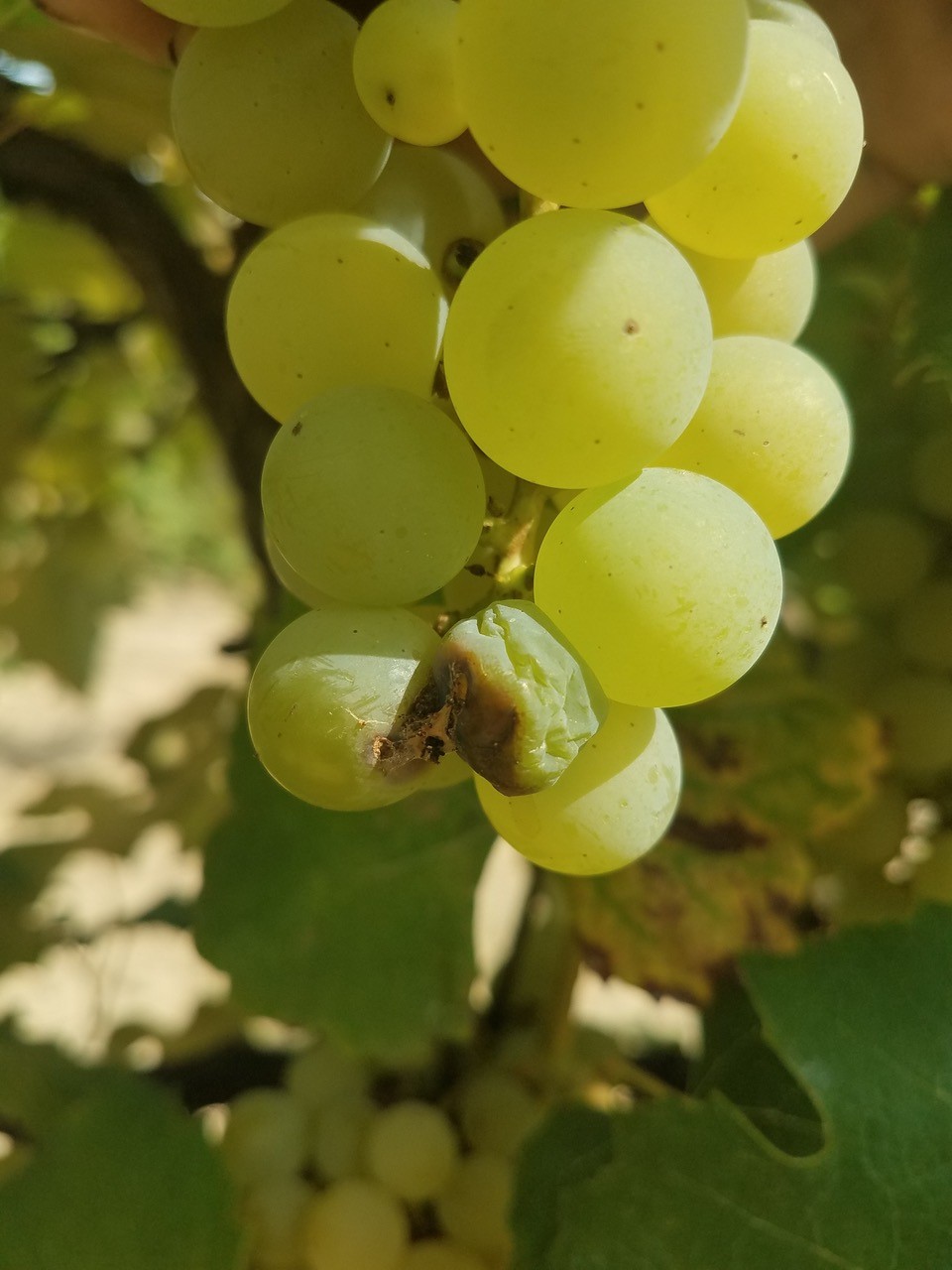Southwest Michigan fruit update – Sept. 10, 2019
Apple harvest is picking up steam.

Weather
The last two weeks have been cooler than normal with highs generally in the mid- to upper 70s and lows in the 50s. Scattered rain showers crossed the region last week and cool, cloudy weather was the norm. The last two months have been quite dry. Rainfall over the last two months ranged from 3 to 7 inches averaging about 5.6 inches. The potential evaporation for those two months was about 10 inches.
The dry conditions in July and August have left most soils dry. We are seeing color change in the leaves of drought stressed and weak trees. Plants that lose their leaves early such as five-leaf ivy are also changing color.
The forecast this week is for warm, summer-like weather with highs near 90 and lows around 70. Cooler weather will return by the weekend. The cool conditions have really slowed down heat accumulations. Last week we accumulated 150 growing degree days (GGD) base 42 and 100 GDD base 50.
|
Southwest Michigan GDD summary from March 1 – Sept. 8, 2019 | |||
|---|---|---|---|
|
Station |
GDD 42 F |
GDD 45 F |
GDD 50 F |
|
Benton Harbor (SWMREC) |
3,421 |
2,967 |
2,272 |
|
Lawton (Lawton) |
3,447 |
2,992 |
2,292 |
|
Fennville (TNRC) |
3,205 |
2,765 |
2,092 |
|
Average for the SW region |
3,418 |
2,965 |
2,270 |
Check out the animated weather forecasts from Jeff Andresen at the weather tab in the Michigan State University Extension Fruit & Nuts Page. Articles and other regional reports can be found at the Fruit News page. There is no weather forecast for this week.
Tree fruit
We are still catching late-season fruit pests. Oriental fruit moth trap catches are still high in many orchards. At the Trevor Nichols Research Center, trap catches of oriental fruit moth have gone up, while codling moth trap catches are trending down. Obliquebanded leafroller trap catch is down in most orchards. Catches of brown marmorated stink bug adults are increasing. Brown marmorated stink bugs can cause significant damage late in the season. These pests often appear in orchards after soybeans lose their leaves. With the late planting of corn and soybeans, these crops are behind too. Soybeans are just starting to lose their leaves. Growers treating for other orchard pests should include materials that will also control brown marmorated stink bugs.
Peaches are showing leaf discoloration and early fall color on trees with chronic winter damage and nitrogen deficiency. Gummy terminal branch tips due to oriental fruit moth entry are turning black. Phomopsis infection of these areas provide an overwintering site for this disease.
.jpg?language_id=1)
In cherries, post-harvest chlorothalonil applications are wearing off and more orchards are beginning to lose leaves to cherry leaf spot. The dry conditions over the last two months have really slowed the spread of this disease.
Plum harvest is winding down. Brown rot was a problem in some orchards this season. Knocking off rotted fruit before the fruit dry on the branches helps reduce the carryover problem for next year.

Apple growers are picking McIntosh and spot-picking Gala, Honeycrisp and other early apples for the fresh market. Jonathans and Empires are being picked for taffy apples. Apples are also being harvested for processing. The cool weather has enhanced fruit color and bird pecks are a problem on red fruit. The Enviroweather apple maturity app can be used to estimate predicted harvest dates for your area. Apple maturity reports are released on Wednesdays and posted to the MSU Extension Fruit & Nut News Page.
ReTain applications for harvest management (stop drop) are generally recommended at 30 and 14 days before harvest. Bitter rot symptoms on apple fruit are showing up both on leaves and fruit. Codling moth, oriental fruit moth and obliquebanded leafroller are all threats to fruit now. These pests are flying and laying eggs. Many growers have applied insecticides to be on the safe side with later maturing varieties.
Small fruit

Spotted wing Drosophila numbers are probably high but few people are still trapping this pest. Protect ripening fruit.
Grapes are past veraison and the berries are ripening. With heavy dews every morning, downy mildew can spread quickly. Grape berry moth trap catches are declining in most vineyards, but we are still trapping this pest and egglaying continues. Many growers have applied insecticides recently to protect against fruit flies, wasps and berry moths to try and keep the fruit clusters clean and reduce bunch rots. Botrytis and sour bunch rot of the berry clusters are a concern. See “Late season cultural and chemical options for diseases in grapes—don’t wait!” for more information.
.jpg?language_id=1)
Blueberry harvest is finished. Blueberry growers need to maintain irrigation now. Soils should be kept moist in September. Fruit bud development is starting and expanding buds are visible. Drought conditions can reduce next year’s crop potential by reducing flower bud numbers. Some growers have begun to prune their bushes because harvest is over and they have labor. Fall pruning reduces the plants winter hardiness and can set up increased winter damage if we have another cold winter.
Strawberries are growing well. The fields need be irrigated to maintain good plant growth. Include fungicides to protect the leaves from foliar diseases. See “Protect strawberries from foliar diseases after renovation” for more information.
Fall raspberry harvest continues. Raspberries and blackberries are very attractive to SWD and fruit needs to be protected from this pest. One effective way to reduce SWD is to shorten the harvest interval to two days and pick all ripe fruit. Sort out the soft berries and destroy them away from the field. In summer raspberries, old floricanes should be removed to increase sunlight and air flow in the planting reducing disease.
Related articles
- Southwest Michigan fruit update – September 3, 2019
- MSU vineyard IPM scouting report – August 28, 2019
- Southwest Michigan apple maturity report – Sept. 4, 2019
- Predicted 2019 apple harvest dates
- What can be done for late season downy mildew on grapes?
- Irrigating Michigan blueberries
- Sampling berries for spotted wing drosophila larvae
- Spotted Wing Drosophila Management Recommendations for Michigan Raspberry and Blackberry Growers



 Print
Print Email
Email




